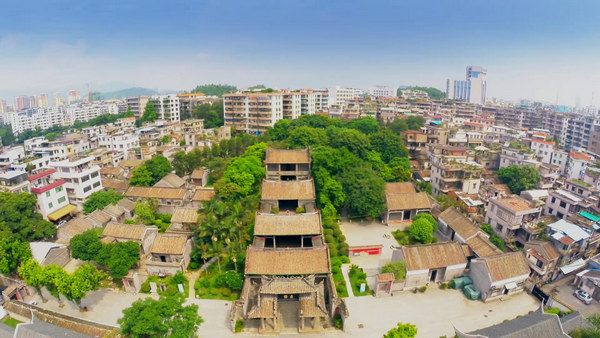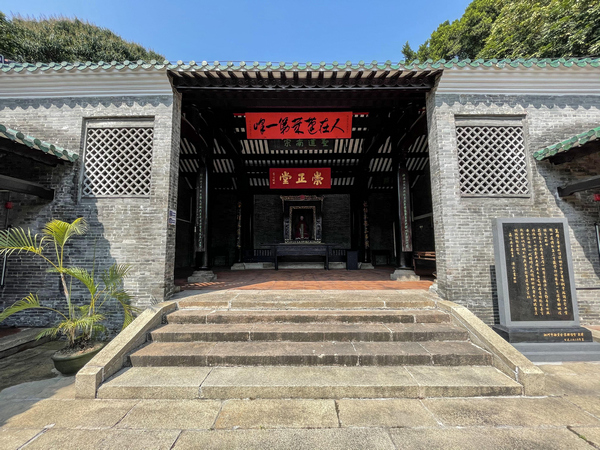The Chen Baisha Hall (Chen Baisha Memorial Hall)
The Chen Baisha Memorial Hall is located at No. 37 Baisha Avenue West, Pengjiang District, Jiangmen City, covering an area of 18,000㎡. The hall preserves several important historical sites, including the Chen Baisha Hall, the Zhenjie Arch, Baisha’s birthplace, and the tomb of Chen Baisha’s parents.
The Chen Baisha Hall was first constructed in the winter of the 11th year of the Wanli reign (1583) and completed in September of the 12th year (1584). It measures 60 meters in depth from north to south and 14.5 meters in width from east to west, occupying a total area of 870㎡. The hall is organized into four courtyards, with the main entrance leading into Chunyang Hall, followed by Zhenjie Hall, Chongzheng Hall, and Biyu Tower. In October 2019, the Chen Baisha Hall was listed as a national key cultural relic under the eighth batch of the National Protected Cultural Heritage Sites. Due to its rich historical significance and well-preserved classical architecture, the hall attracts visitors from all over the country. It also serves as a venue for moral and ideological education for young people, as well as a center for research on the inheritance of traditional culture. Cultural activities such as the "Opening of the Brush Ceremony" are often held, along with the annual "Chen Baisha Cultural Festival" and academic seminars to commemorate his 595th birthday.
Chen Baisha, born Chen Xianzhang (1428–1500), was a renowned naturalistic thinker, educator, calligrapher, poet, and life scientist during the mid-Ming Dynasty. He was also known as the leading figure in the ancient art of the Guqin in Lingnan Region. A descendant of the Chen family of Baisha village, he is honored as "Mr. Baisha." He inherited the Confucian thought of Confucius and Mencius and pioneered the development of Neo-Confucianism in the Ming Dynasty. His key philosophical ideas included "clarifying the heart to understand the Dao," "the Dao is the foundation, and it pervades all things," "learning is about personal realization," and "learning requires questioning," which laid the foundation for the "Jiangmen School." In the second year of the Wanli reign (1574), an imperial decree ordered the construction of the Baisha Hall, and in the 13th year (1585), another decree allowed Chen to be honored alongside Confucius in Confucian temples. He remains the only scholar from Lingnan Region to be enshrined in Confucius temples and is praised as the "True Confucian of the Holy Age" and "The One True Confucian of Lingnan."






-
扫一扫在手机打开当前页









